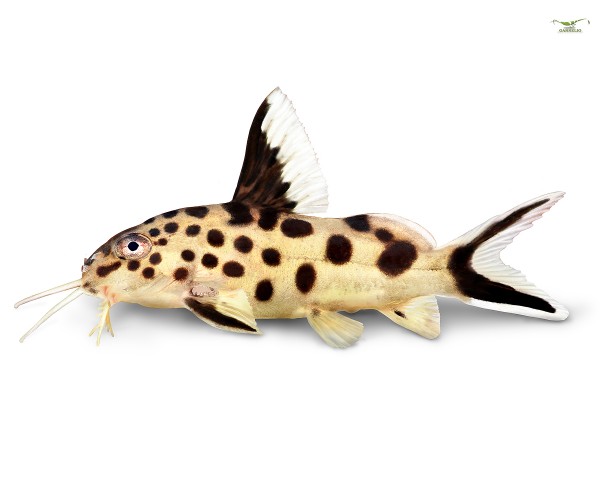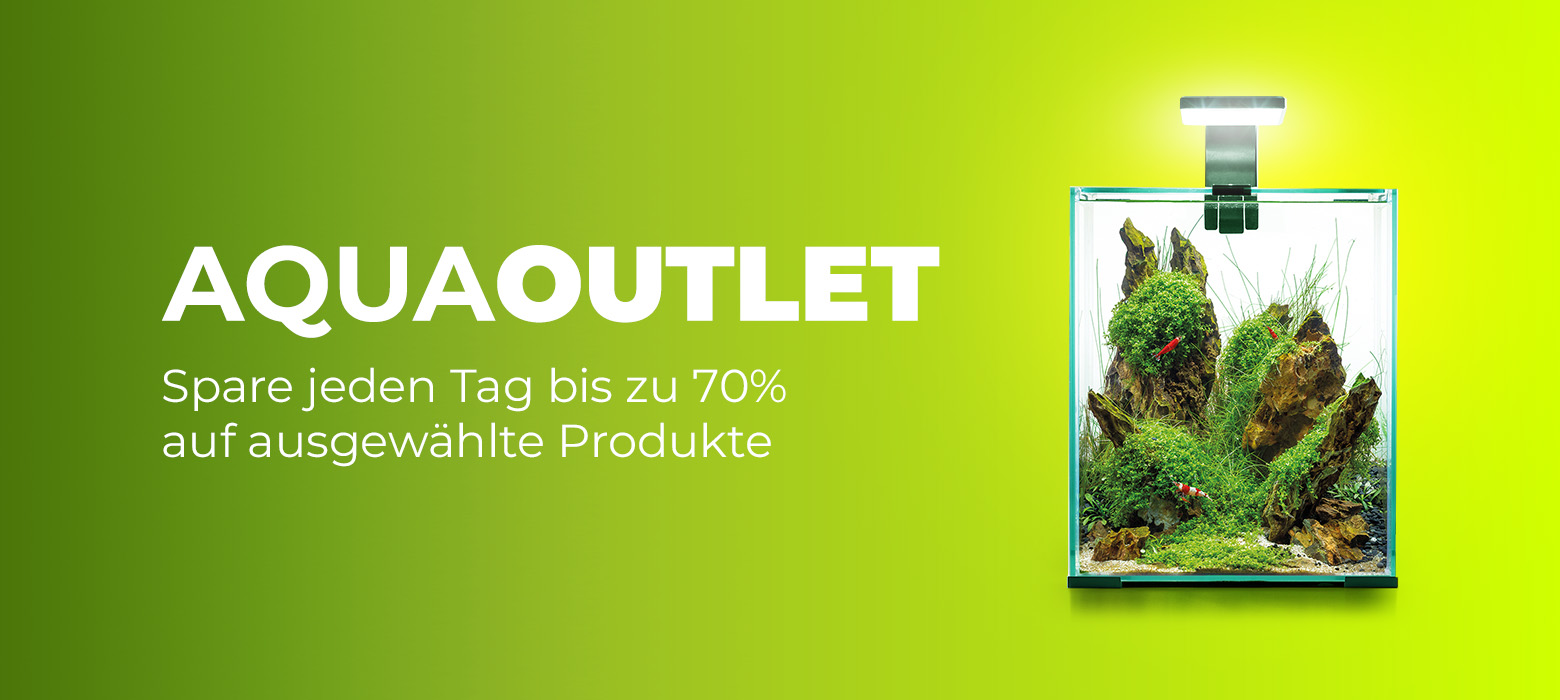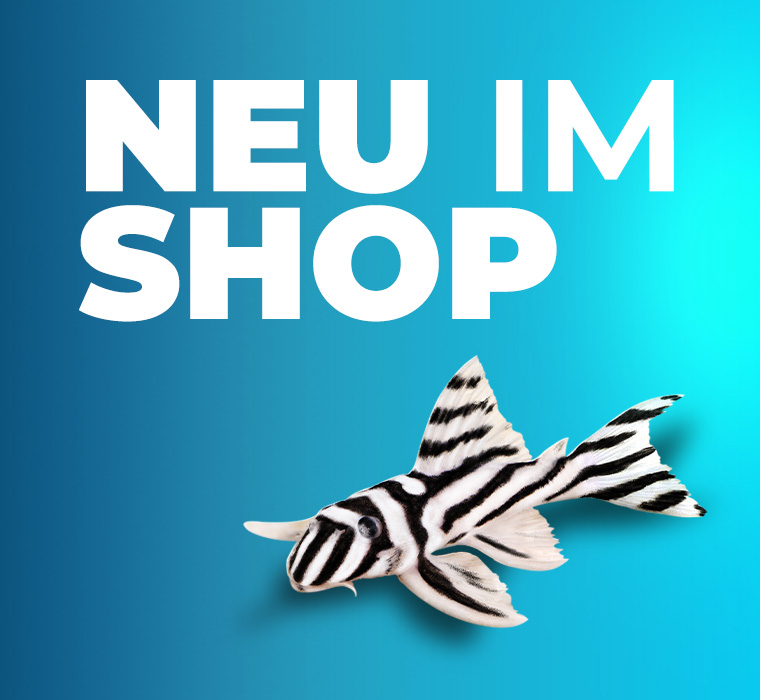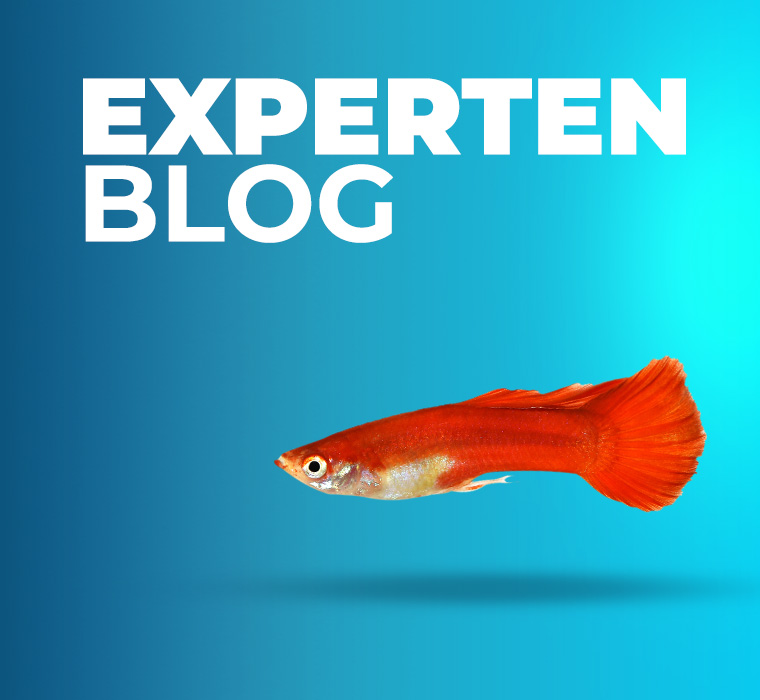incl. VAT plus shipping costs
Currently not available
Delivery only innh. Germany and Austria possible.
Switch to the German store
- Item no: 7736
Fast delivery times
All products are in stock with us!14 years of breeding experience
Let our team of experts advise you!High customer satisfaction
from over 3,000 reviews "| Water values: | medium hard to hard |
| Pelvic region: | Below |
| Temperature: | 25-30 °C |
| Feature: | nocturnal |
| with fish?: | Yes, with peaceful fish |
| Aquarium size: | 400/450 l (approx. 150cm) |
| with snails/shells?: | No |
| Diet: | carnivore - meat eater |
| Final size: | > 12cm |
| Fish group: | Catfish |
| with shrimps?: | Socialization not possible |
| Difficulty: | 2 - Normal |
| Visual effect: | Especially colorful |
| Planting possible?: | Yes |
| Origin: | Africa |
| Behavior: | Normal |
| with large crabs?: | No |
| Breeding: | heavy |
| with dwarf crabs?: | No |
| with crabs?: | No |
The rather nocturnal Spotted Featherbeard Catfish, Leopard Cat fish or Multipoint Cuckoo Catfish (Synodontis multipunctatus) is often kept as a by-fish in aquariums with Malawi or Tanganyika cichlids. It originates from East Africa, where it is found in Lake Tanganyika. The Multipoint Cuckoo Catfish grows up to 25 cm long. Because these catfishes are incredibly lively and bustling, they need a large aquarium of 450 liters or more.
The body shape of the Bigeye Pinniped Catfish is striking. The namesake three pairs of whiskers are long and quite massive. Its laterally compressed body leads into a deeply indented caudal fin. The scaleless skin of the fish is pale in base color and dotted with dark spots of varying sizes, and the fins are dark. The iris of the striking large eyes is orange-brown.
The multipoint cuckoo catfish gets its name from its unusual mode of reproduction. These catfish, as brood parasites, slip their eggs under mouth-brooding cichlids, in whose mouth the cuckoo babies not only grow up, but even feed first on the eggs and later on the larvae of the cichlids. During the courtship of the cichlids, the cuckoo catfish intervene and also mate. The perch then inadvertently ingest the catfish eggs. After two weeks, 6 to 20 small pinnipeds leave the mouth of their host fish. At this point they are already quite large and independent and eat the normal food that the larger specimens also get. Breeding in the aquarium is possible, although very difficult - for example with Tropheus species it is not possible, because these cichlids react very aggressively to the catfish when they try to disturb the breeding business. With other mouthbrooders from Lake Malawi or Lake Victoria, on the other hand, it can succeed, because these do not come from the home of the Cuckoo's featherbeard catfish and do not know this procedure. Also with Haplochromis an attempt can be started.
The Vielpunkt Cuckoo Catfish has a very interesting and quite robust social behavior. It is a group fish and should definitely not be kept alone, lest it take out its temper on aquarium mates. The minimum group size is 5 specimens. Later, the animals become rather solitary with age, but are not strongly territorial. Socialization with large cichlids from Lake Malawi or Lake Tanganyika is possible, although the very lively cuckoo catfish should not be kept with sand cichlids, as they can disturb them sensitively. Shrimp would be eaten, while crayfish can severely injure the scaleless catfish. Snails are eaten.
In nature, the carnivorous multipoint cuckoo catfish eats snails as well as insects and their larvae; in the aquarium, they readily accept live food and frozen food of appropriate size in addition to food tablets and food granules for carnivorous fish; food snails are also suitable as live food.
Good filtration is advisable, because the Many-spotted Featherbeard Catfish swim a lot in the aquarium and eat a lot. Spotted featherbeard catfish need caves or other hiding places to be able to avoid each other if necessary. There should always be more hiding places in the aquarium than Gepunktete Fiederbartwelse. Sand or other non-sharp substrate should be chosen as substrate. Plants are possible, because the Cuckoo's Featherbeard Catfish does not nibble at the greenery in the aquarium.
Sex differentiation in the leopard catfish is not easy. Females have a genital papilla that males lack.
The Spotted Featherbeard Catfish likes the water at least medium hard to hard, the temperature should be between 24 and 27 degrees.
Our food recommendation: The NatureHolic Cichfeed is a soft granulate that has a similar consistency to small crustaceans and insect larvae. The soft consistency of the granules protects the delicate fish mouth from micro injuries that can be caused by hard food granules. The size fits well for larger carnivorous aquarium fish.
Our plant recommendation: Use for planting NatureHolic InVitros. These are free of snails, planarians and other unwanted co-inhabitants. Also free of algae spores, bacteria and fungi.
Expert Tip: We recommend for fish keeping the NatureHolic 3 Phase Liquid. The care set offers the best all-round protection for your animals. It ensures optimal conditions for successful breeding and keeping.
| Scientific name | Synodontis multipunctatus |
| German Name: | Multipoint cuckoo catfish, spotted featherbeard catfish, multipoint cuckoo catfish, leopard catfish, bigeye cuckoo catfish, multipoint cuckoo featherbeard catfish |
| Difficulty level: | advanced |
| Origin/Distribution: | East Africa |
| Coloration: | dark spots on light background, dark fins, strikingly large eyes |
| Age expectancy | 15 years |
| Water parameters: | GH 10 to 20, KH 8 to 15, pH 7.2 to 8.2, temperature 24 to 27 °C |
| Tank size: | 450 liters and up |
| Food | Snail eaters, insects, live food, frozen food, granulated food for carnivorous fish |
| Breeding | especially |
| Behavior | lively, pronounced social behavior, somewhat rowdy |
| Group size | from 5 animals |
| Further information | Ten typical aquarium fish for beginners and alternatives to them, Tips for acclimating fish to the aquarium, Feeding aquarium fish properly - cheap food and what it can do |
- Item no: 7736
- EAN No.: 7427061497304
Entdecke die Garnelio Welt!
Garnelio gehört zu den größten Onlineshops für wirbellose Aquarientiere weltweit.
Viele Artikel gibt es exklusiv nur bei uns im Shop.






